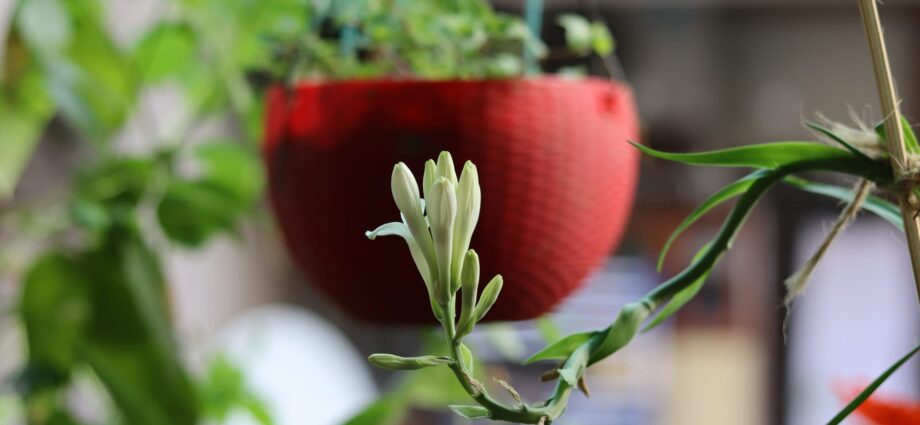How a flower of Latin American origin acquired an Indian name and identity like ‘Rajanigandha’
Rajanigandha—the name says it all, i.e., a flower that blossoms and emits fragrance at night. But the name is misleading as far as its origin is concerned. As much as its name may sound Indian, it’s a plant native to Latin America. Attracted probably by its fragrance, the Portuguese seafarers are said to have brought this beautiful flower plant from Mexico and planted it in hot and humid coastal parts of western India. The plant felt like being in its natural habitat in the warm humid climate of India’s western coastal parts and eventually spread to the whole expanse of the country.
A member of the Agavaceae (Agave) family of plants, its botanical name is Polianthes tuberosa. It’s grown today not only as an ornamental flower, but is also produced at a large scale as a significant flower crop in several parts of the country, especially Uttarakhand. It can be used as a cut flower (in bouquets and flower vases), loose flower and as a source for its fragrant fluid used widely in the perfume industry. The tuberose bulbs of Rajanigandha can be planted in a flower pot or in the soil in a garden—it grows equally well, though quite slowly.
Bunches of gleaming white tube-shaped flowers silhouetted against the pitch darkness of the night and exuding an irresistible fragrance have inspired a thousand lyrics. However, for people of my vintage, it’s the innocent, charming face of Vidya Sinha from the film ‘Rajanigandha’ that pops up on the mind-screen with that timeless song, penned by Yogesh and sung by Lata Mangeshkar, being played in the background.
Mostly known as a Basu Chatterjee film, ‘Rajanigandha’ was based on a story entitled ‘Yahi Sach Hai’ by prominent woman writer of Hindi literature Mannu Bhandari. She was a leading figure of what is called the Nayi Kahani literary movement of the 20th century. In terms of its theme, it seems to have been inspired by George Bernard Shaw’s ‘Candida’. Interestingly, Candida (Rain Lily) is also the name of a flower that resembles ‘Rajanigandha’.
Many of our beautiful flowers have very unpoetic names in Hindi, like ‘Jarul’ for ‘Lagerstroemia’. So, it is interesting to note that Rajanigandha, a flower of foreign origin, has such a beautiful and meaningful ‘national’ name, which sounds partly तत्सम (Rajani) and partly तद्भव (Gandha). It has many names in other Indian languages, such as Rojoni-Gondha (রজনীগন্ধা) in Bengali, Gul Shabbi in Urdu, and NishiGandha (निशिगंध) or Gulchadhi (गुलछडी) in Marathi.
Mannu Bhandari was a lecturer of Hindi initially in Calcutta and subsequently in Delhi’s Miranda House. So, she perhaps chose the Bangla name of the flower over its other, though less common, Hindi names, such as ‘सुगंधराज’ partly due to Bangla influence during her stay in Calcutta and partly because her story is set in Calcutta and Kanpur, not Delhi and Bombay, as in the film. In her Hindi story, the flower is called ‘Rajanigandha’ and plays a pivotal role, just as it does in the film. Her story, which may have autobiographical elements, was first published in 1960, whereas Basu Chatterjee’s film, based on it, came in 1973. Ever since the film became a success, the name ‘Rajanigandha’ got etched in our national consciousness. Today, the moment someone says Rajanigandha, it conjures up the image of the film’s protagonist (beautifully essayed by Vidya Sinha) and her dilemma captured in those beautiful songs for most people across languages. The film’s story revolves around the female protagonist’s dilemma of being truthful to the past or faithful to the present, and ‘Rajanigandha’ seems to have become emblematic of her situation.

